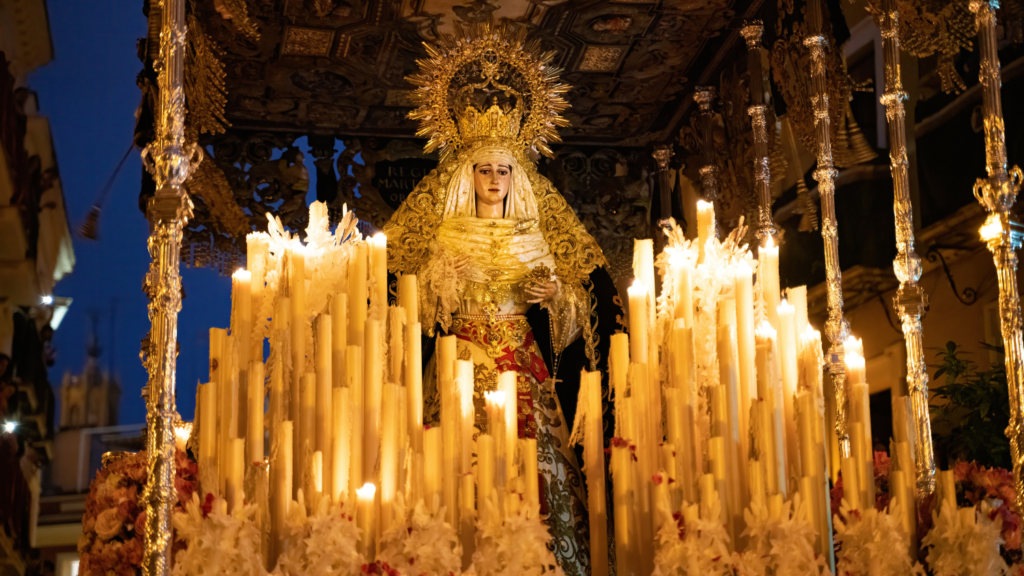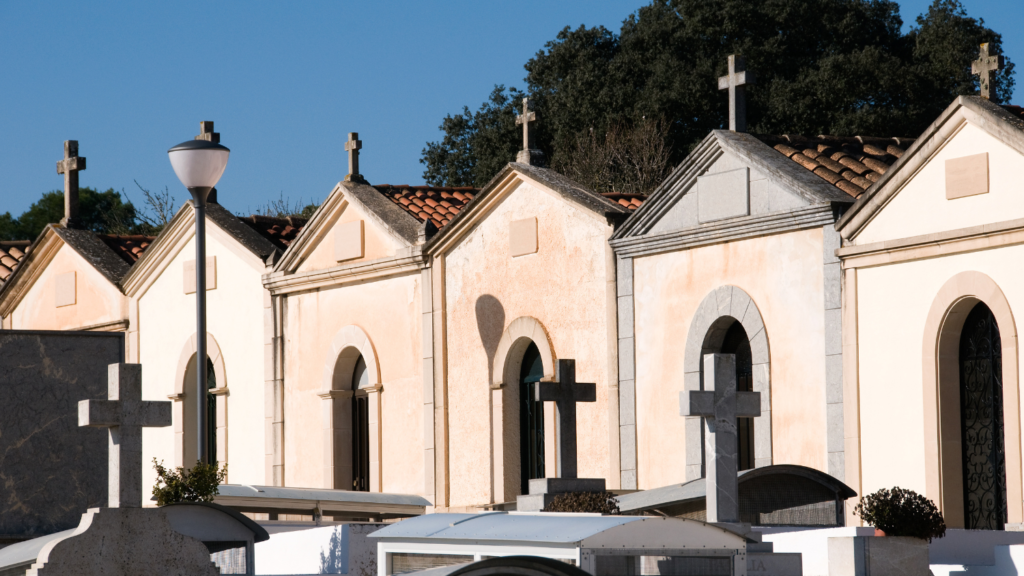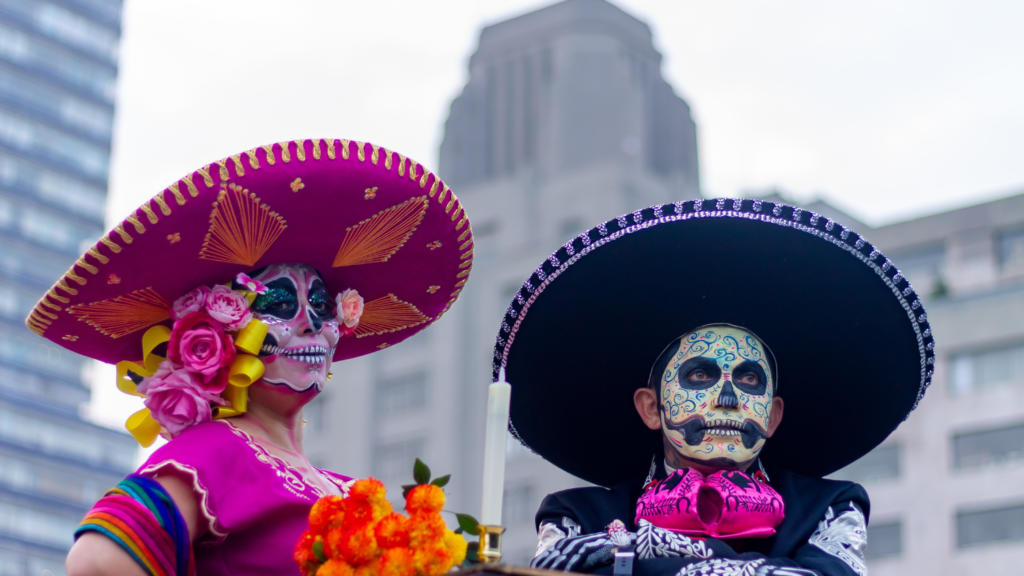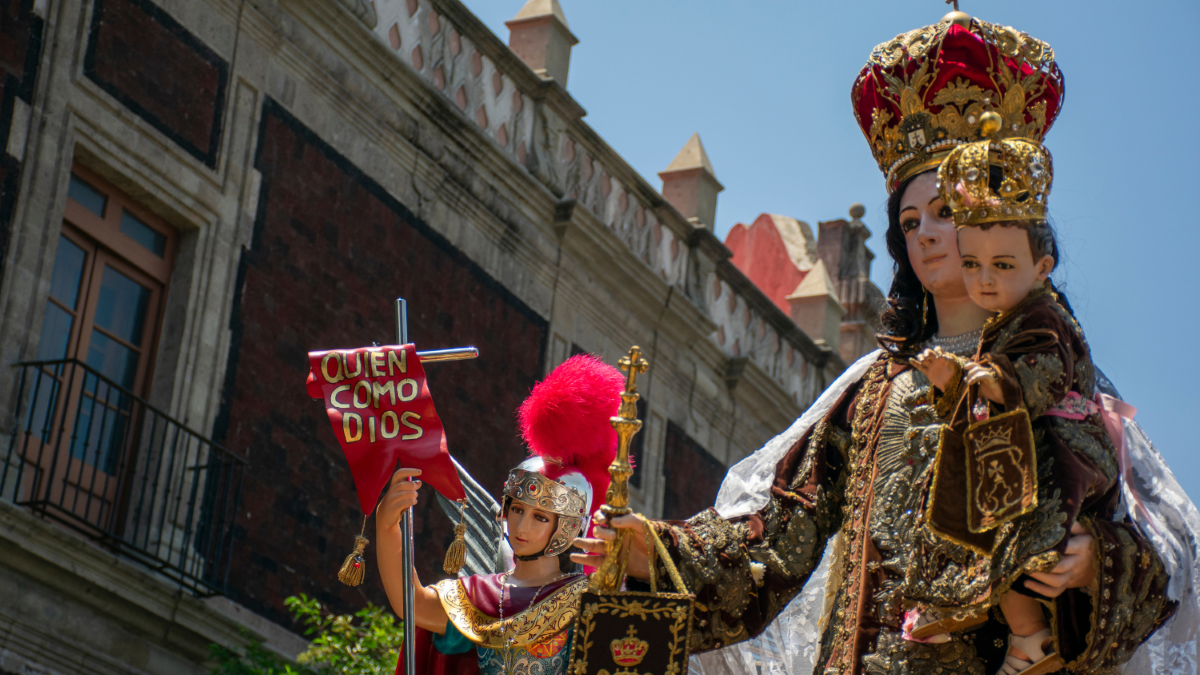All Saints’ Day and Day of the Dead celebrations in Spain are much more varied than in Poland. In Andalusia, you can take part in a “procession of souls”, observe a competition for the prettiest figurines made of… food and try roasted chestnuts.
Mexican roots
The first association with the Spanish language and All Saints’ Day? Probably the Mexican Día de Muertos, or Day of the Dead. It is celebrated on 2 November (although the celebrations start a day earlier), which is when it is in Poland, but it has a completely different character than our All Souls’ Day. While we remember the dead in an atmosphere of reflection, the Mexicans do it in a cheerful way. They dress up in traditional costumes à la Halloween and feast with family and friends.
In Andalusia, and Spain in general, celebrations are not as lavish as in Mexico, but the celebrations are definitely more joyful and varied than in Poland. Of course, Spaniards also visit the graves of loved ones. Interestingly, Spanish cemeteries are dominated not by individual gravestones, but by columbaria – flat walls that house many urns. Secondly, it is unlikely that candles are brought, but it is common to leave flowers at the grave. However, the celebration does not end with a visit to the cemetery.

Los Tosantos, or vegetables and fish heads
The most original way of celebrating has taken hold in Cadiz. The city’s biggest markets (Mercado Central and Mercado Virgen del Rosario) display compositions that slightly resemble the Christmas cribs known from Polish churches. However, instead of religious statues, they feature figures made from fragments of food – vegetables and… fish or chicken heads.
The puppets are usually intended to represent celebrities, such as actors, politicians or footballers. The highlight of the day is the competition for the most beautifully decorated stall. Then it is time to taste the local specialities. This tradition, which originated in Cadiz, is called Los Tosantos, an abbreviation of the Spanish translation of ‘All Saints’ Day’, or Día de Todos los Santos. It has been cultivated for well over a century.
In the municipality of Begíjar, located in the province of Jaén, the inhabitants believe in the wandering of souls. According to an old legend, the souls of the dead are supposed to return to the world of the living on the night before All Saints’ Day. To facilitate their journey, the inhabitants of the Andalusian pueblo light oil candles in the windows of their homes. They also protect themselves from the evil spirits by jamming the lock with gachas, a gruel made from flour, water, salt, oil and paprika. They themselves, meanwhile, eat chocolate tortillas.
Fans of the dark, mysterious atmosphere will enjoy the Día de Todos los Santos celebrations in El Borge, located about 30 kilometres northeast of Malaga. In the evening of 31 October, the Noche de Ánimas, or Night of the Souls, begins there. Its highlight is the procession through the streets of the village, whose participants are dressed in characteristic white robes. They wear hoods on their heads and hold candles in their hands. In this way, they refer to the centuries-old legend of Santa Compaña, a procession of souls whose arrival was supposed to mean the imminent death of one of the haunted village’s inhabitants. The procession sets off about half an hour before midnight.

Roasted chestnuts as your crust
We wander a little north of Andalusia to Extremadura, specifically to the town of Cáceres. There, the delicacy associated with Día de Todos los Santos and Día de los Muertos is roasted chestnuts. They were first prepared by local altar boys who wanted to warm up and eat them when they rang the bells in the early morning of 2 November to call the inhabitants to the cemetery. Chestnuts have been adopted as a snack associated with these festivities throughout Spain. You could say that on the Iberian Peninsula they are the equivalent of our Lord’s crust. The traditional Spanish name for this delicacy is calbote. The same name is used for the fiesta held on 1 November in Cáceres.
While we’re on the subject of treats – in Andalusia, as throughout Europe, children are keen to draw on American traditions. On the first and second of November, they circulate around neighbouring houses and flats, dressed up in Halloween costumes. In the nearby municipality of El Ronquillo, near Seville, an Andalusian version of the fun from overseas – Cachetía– is cultivated.
The children, asking for sweets, recite the occasional rhyme. “They threaten” that if they don’t get the treats, they will “stay all day” in the inhospitable household(Cachetía, tía, tía, como no me dé una castaña, me quedo aquí ‘to’ el día.). The neighbours give them sweets, but also local delicacies: sultanas, almonds or the aforementioned roasted chestnuts.
Collecting sweets has also been adopted in the village of Fuente de Piedra near Antequera, where the custom is called La Ureña. It was started not in America, but by local altar boys who knocked on the doors of homes and asked people to share food, not necessarily sweet, with them.

American-style celebrations
Maro is a small village located just outside the very popular tourist town of Nerja. The combination of its name and the word Halloween gave rise to the name of the local celebration of the night from 31 October to 1 November – Maroween. Many elements of the holiday have been transferred to Maro from America, such as the best costume competition and house decorating. The main difference is in the gastronomy – the focus (and in most of the treats) is not on pumpkins, but on chestnuts.
In the capital of Andalusia, Seville, specifically in the district of Santa Cruz, on All Saints’ Eve the streets are filled with people dressed as Don Juan Tenorio, the title character of José Zorrilli’s 19th-century drama. The play itself is performed on this day in many Seville theatres. Why exactly this one? The final act of the drama is set precisely on All Saints’ night in Seville. In addition, the plot is full of religious-fantastic themes.
The Costa del Sol is not famous for its particularly intense or original Día de Todos los Santos celebrations. Here, the best way to get a feel for the Andalusian version of this holiday is to try the roasted chestnuts on display in the streets of Malaga and Marbella at that time. You can also celebrate in American style by having a Halloween party in one of the countless bars and clubs.

